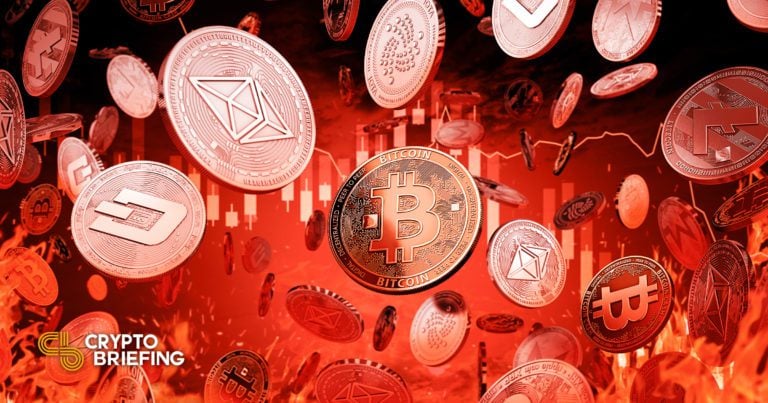
Key Takeaways
- Several technical indicators have flashed buy signals in recent weeks, pointing to a possible crypto market bottom.
- However, the current macroeconomic situation is yet to show any sign of improvement.
- Europe's energy crisis could force the Fed to pivot on its monetary tightening, relieving pressure on risk-on assets.
The current European energy crisis could force the Federal Reserve to pivot on its monetary tightening regime. Still, with inflation showing no sign of slowing, there may be more pain ahead before the crypto market stages a meaningful recovery.
Crypto Capitulation
Is the market bottom in? From the smallest retail investors to the biggest hedge fund managers, this is the big question on everyone’s minds right now. The commotion of macro signals and technical indicators makes it hard to figure out what exactly is going on in the economy at large, and even more so in the faster-paced crypto market. Today, I want to try and cut through the noise and provide cases for why the market may or may not have bottomed.
First, the good news (so long as you’re not still sitting on the sidelines). Several big technical indicators have flashed buy signals in recent weeks, strengthening the case that the crypto market may have reached its lowest point. Net Unrealized Profit/Loss (NUPL), the Pi Cycle Bottom, and the Puell Multiple have all hit once-in-a-cycle levels that have historically marked the bottom. While technical indicators like this can sometimes have a dubious track record, when several line up like they have now, it’s certainly worth paying attention in my book.
Moving away from the technical side of things, the way the crypto market is reacting to macroeconomic news is also worth considering. A big change came after June’s Consumer Price Index data registered a new 40-month high of 9.1%. Many market participants expected crypto to start another leg down after the bearish news. However, the opposite happened. Since the CPI release, crypto has edged higher, catching out anyone attempting a late short sell. Similarly, Wednesday’s 75 basis point rate hike and yesterday’s negative GDP growth have, paradoxically, pushed crypto higher, indicating that the market may now have “priced in” the current downward economic trend.
Still, even if market participants have stopped caring about the broader macroeconomic situation, it doesn’t mean there isn’t more pain coming. The straight fact is that inflation is still running hot, and the Fed is committed to bringing it back down to an acceptable level. Although Fed Chair Jerome Powell said after the Wednesday hike that it had “become appropriate to slow the pace of increases,” he also left the door open to “an even larger” hike if needed. The ongoing hikes, coupled with a selloff of the Fed’s treasury notes and mortgage-backed securities, will tighten the flow of money and almost certainly put a damper on risk-on assets like crypto.
The other big macro problem is the cost of energy—specifically in Europe. The war in Ukraine and the consequent boycott of Russian energy have exacerbated the already alarming global inflation rates. Winter is coming, and there’s a real possibility that many European countries will not have the energy to heat their citizens’ homes, certainly not at a price the average Joe is willing to pay. If the embargo on Russian oil and gas continues, Europe will have to rely on the U.S. for energy in the coming months.
Herein lies the rub. As you may have noticed, in recent months the euro has weakened substantially versus a dollar, aided by the Fed’s rate raises and monetary tightening. At the same time, it seems likely that European nations will need to purchase American energy to keep their economies running and residents warm, and this puts the U.S. in a sticky situation.
Broadly, the U.S. has two options: take measures to strengthen the euro versus the dollar by injecting liquidity into the European economy or let European countries default from rising energy costs. Bear in mind that many European countries and the European Central Bank hold substantial amounts of U.S. debt, meaning that if they default, it will ultimately hurt the U.S. economy too.
Therefore, the Fed may have to end its monetary tightening to avoid catastrophe in Europe. Currently, there’s a window from now until the winter where the U.S. can continue raising rates. However, Europe will soon reach a breaking point, and the Fed will be forced to relieve some pressure by halting or reversing its current monetary policy, thus weakening the dollar.
The ultimate question is this: can the market head lower before the Fed is forced to pivot? In my opinion, it will be difficult for crypto to make new lows anytime soon considering the huge amount of deleveraging that caused Bitcoin’s crash below $18,000. Still, I think we could certainly revisit those levels if the macro situation gets worse. If you’re interested in diving deeper into the global economic situation, check out Arthur Hayes’ recent essays covering the topic; you won’t be disappointed.
Disclosure: At the time of writing this piece, the author owned ETH, BTC, and several other cryptocurrencies.
"Opinion" - Google News
July 29, 2022 at 08:04PM
https://ift.tt/A6a9VHL
Opinion: Is the Crypto Market Bottom In? - Crypto Briefing
"Opinion" - Google News
https://ift.tt/wZ9Cpzg
Shoes Man Tutorial
Pos News Update
Meme Update
Korean Entertainment News
Japan News Update
No comments:
Post a Comment